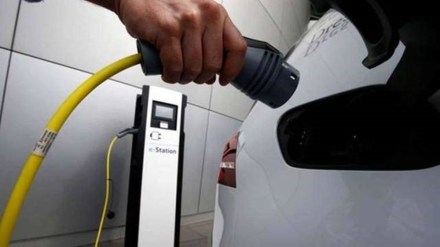By Aravind Harikumar and Himani Jain
Although there has yet to be a decision or policy, the current discourse sends the signal that diesel is not forever. The market trend too says the same. Market share of diesel cars has fallen to 18% today, from 48% in 2014. The Council on Energy, Environment and Water (CEEW) estimates show that there could be at least 96 lakh diesel four-wheelers on the road in 53 million-plus Indian cities (as per census 2011) by 2027. Will all these users end up using EVs? Indian consumers have high expectations set by a domestic manufacturing industry that has evolved since the 1940s to produce world-class vehicles with high performance, top durability and low costs. It won’t be a cakewalk for the nascent EV industry to corner all this demand. Indian consumers are still apprehensive about EVs due to the limited availability of models, limited charging infrastructure, limited range of available vehicles and unclear economic benefits.
The following five ways are how the EV sector can capture the highest share of the diesel pie, while ensuring just, equitable and inclusive mobility in our cities.
Also read: Electric vehicles use 11 different fluids, says Debanjali Sengupta of Shell Lubricants
First, manufacturers must ramp up EV production. About 33,000 EVs were sold in 2022. In the same year, about 6.3 lakh diesel cars and a total of 33 lakh cars were sold in India. TATA Motors, the largest electric car manufacturer in India, plans to ramp up its EV production capacity to 1 lakh by 2024. Similarly, all other industry players have to increase production capacities with multiple electric car models with a varied range of functionalities at competitive prices. Significant expansion in the production of EVs can remove the supply constraint as a barrier restricting EV uptake amid the phasing down of diesel cars.
Second, state governments must establish effective charging infrastructure in urban areas. The ETAC report states that 60-70% of India vehicle owners in India do not have access to dedicated parking for charging. A large-scale transition, especially in the four-wheeler segment, calls for reliable fast-charging infrastructure. Only 15% of the publicly accessible chargers at the end of FY 20-21 were fast chargers. ETAC estimates more than 10,000 charging stations to come up in India by 2025. As this expansion is mainly spearheaded by central government initiatives, 94% of these are expected to come up on national highways and not urban areas. As the reduction of diesel cars can mainly be expected in urban areas, accessible public charging infrastructure to match the levels of petrol/diesel refuelling infrastructure is imperative to nudge consumers to buy EVs over petrol and CNG. States will have to take the lead in effective charging infrastructure development in cities.
Third, introduce EV mandates for taxis. With the presence of aggregators like Uber and Ola, governments can easily bring in EV mandates. The government of Delhi’s intention is the same, using the Motor Vehicle Aggregator Scheme (2023). Other states can learn from the Delhi experience to use regulations to fast-track EV adoption in the taxi segment.
Fourth, leverage economic instruments to make EVs more attractive. Scrapping-linked EV incentives will increase their chances of being purchased by those phasing out old diesel vehicles. The CEEW-CEF 2023 study shows that state EV policies that incorporate consumer incentives saw 2X market growth compared to states without such incentives. Hence, it is essential to build incentives for use cases where EVs lack economic parity such as personal car segments. Simultaneously, economic instruments like taxation, and location or time-based restrictions can make EVs more attractive than petrol/CNG vehicles.
Finally and most importantly, build the capacity of State Transport Undertakings (STUs) to combat congestion and offer affordable mobility with e-buses. E-bus penetration is impressive at 7% of the total buses sold in 2022. Comparatively newer city transport undertakings like Lucknow and Kanpur have already transitioned about 42% and 35% of their bus fleet to electric, respectively.
Also read: Medanta Q4FY23 profit surges 4x at Rs 101.07 crore, revenue up 35%
However, CNG buses still remain a popular fuel choice for city buses. Due to nascent technology related apprehension, 90% of the 2,454 e-buses in India are procured and run in a leasing model by STUs. Thus, these authorities continue to depend on OEMs and service providers for operating e-buses and still end up facing issues with effective charging due to poor scheduling. Bus agencies need to augment their know-how on charging, maintenance and scheduling practices to build robust public transport in the long run.
Diesel technology in mobility is anyway phasing out. Policy action will just accelerate this. However, competing petrol and CNG technologies are still here. EVs can become the dominant technology to fill the void left by diesel cars and capture high market shares only when EV production and charging infrastructure is ramped up, e-taxis are mandated, and economic instruments are leveraged to make electric more attractive for personal car users. Most importantly, STUs must augment their capacity to ensure that e-bus transition provides the scale and extent of affordable services, essential for vulnerable urban poor.
Writers are respectively, programme associate and senior programme lead, Council on Energy, Environment and Water (CEEW)
